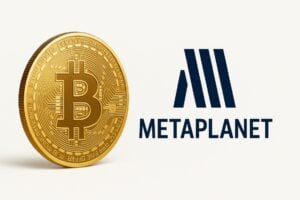
EU news: French and Irish fintech companies have collaborated to launch a euro-backed stablecoin in the market, which will be introduced on the Stellar blockchain one month after the MiCA stablecoin laws come into effect.
Let’s see all the details below.
The launch on the Stellar blockchain post-MiCA of the EU stablecoin in the market
As anticipated, the new quadro normativo of the European Union, known as MiCA (Markets in Crypto-Assets Regulation), is progressively coming into force according to the scheduled timeline.
The first series of regulations, active from July 1st, focuses mainly on stablecoins and their issuers.
These new directives have cleaned up the market from operators unable to meet regulatory requirements, creating a favorable environment for stablecoins pegged to local currencies.
This has led to an increase in the confidence and interest of investors in these digital currencies.
An example of how MiCA is influencing the market is the partnership between the French fintech company Next Generation and the Irish electronic money institution Decta.
These two entities have announced the launch of a stablecoin pegged to the euro, called EURT, on the blockchain of Stellar, scheduled for August 5th. We emphasize that this initiative is fully compliant with MiCA regulations.
Next Generation, closely linked to Tempo France, had already launched EURT in 2017 in collaboration with the Stellar Foundation. However, the lack of a clear regulatory framework led to the suspension of the project.
Now, under MiCA, stablecoins are classified as electronic money tokens (EMT), requiring issuers to hold an EMI license or be a credit institution.
The rebirth of euro-backed stablecoins
The regulatory clarity introduced by MiCA has transformed the market of euro-backed stablecoins, making it more predictable and attractive for investors.
With the entry into force of MiCA, an industry analyst has predicted an increase in demand for euro-backed stablecoins in European markets.
Decta, already authorized by the Central Bank of Ireland as an EMI, will use this license to issue EURT, thus ensuring full regulatory compliance.
Suren Hayriyan, president of Next Generation, stated that the current demand for euro-backed stablecoins is about 30 billion dollars, while the supply is less than 300 million dollars.
The partnership aims to bridge this gap, anticipating significant growth for EURT.
Currently, the market for euro-pegged stablecoins sees the presence of important players such as Circle, with its stablecoin EURC, and Tether with EURT.
Hayriyan has defined these as the main competitors. However, he emphasized that the solid regulatory compliance and technological infrastructure of Next Generation and Decta position them strongly in this emerging market.
Future prospects
Next Generation and Decta aim to launch EURT by October. Circle, the first global stablecoin issuer to comply with MiCA, has chosen France as its European headquarters, citing the country’s “forward-thinking” stance on digital asset regulation.
The forecasts indicate that the activation of MiCA will drive substantial growth in the euro-backed stablecoin sector.
The market capitalization is expected to reach at least 15 billion euros by 2025, growing to 70 billion euros by 2026 and potentially surpassing 2 trillion euros by 2028.
As of July 31, the market capitalization of stablecoins was on the rise, with an increase of 2.1% to 164 billion dollars in July, marking the highest levels since April 2022.
Stablecoins like USD Coin saw their trading volume increase by 48%, demonstrating the growing interest and confidence in the stablecoin market.





















